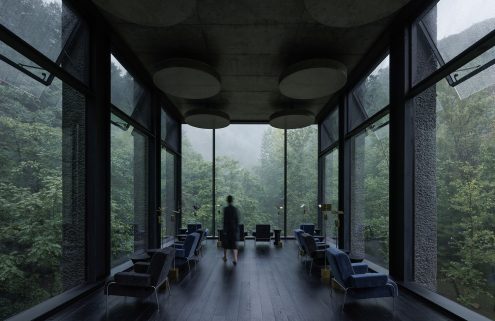From Hiraiho Hill, a polka dot of pink, white and green waterlilies unfurls across an inky pool, heralding the arrival of summer. They float on the largest of six ponds at Shikoku island’s Ritsurin Garden, in turn, revered amongst the ornamental gardens of Japan. And at its centre: the enchanting Kikugetsutei teahouse, encircled by a labyrinth of footpaths, yawning bridges, and over 1,000 ornamental pines, hand-cultivated over 300 years.

Photography: © Louise Long

Photography: © Louise Long

Photography: © Louise Long

Photography: © Louise Long

Photography: © Louise Long

Photography: © Louise Long

Photography: © Louise Long

Photography: © Louise Long
Hailing from the early Edo period, the auspicious sukiya-style teahouse is an heirloom of generations of feudal lords, rulers of the local Takamatsu Matsudaira clan. From the lakeside, its series of elegant rooms – each with three or four open sides – reveal pristine vignettes of the landscape beyond: a delicate pattern of raked stones, swathes of glinting water, and the majestic backdrop of Mt Shiun (‘Purple Cloud Mountain’).
Tea was introduced to Japan by Zen monks in the 8th century, and today’s daily tea ceremonies (welcoming visitors) honour this tradition of hospitality. Sitting on the smooth tatami floor, gazing onto Nanko Pond with a bowl of fresh matcha in hand, the feeling is as serene as floating onto the silken surface of the lake itself.

It’s an experience in synergy with the architecture of the Kikugetsutei teahouse, whose timeless design was inspired by a classical Chinese poem to create fluidity between interior and exterior:
‘When I scoop up the water, I hold the moon in my hands’
From the scattering of spring blossoms, autumn reflections of amber foliage, or winter mist hanging low over the water – there is barely more poetic an encounter than Shikoku’s Kikugetsutei teahouse.


























